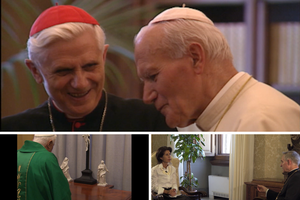A Polish Christmas: Slavic Nativities Featured in Knights of Columbus Exhibit
Unique displays from the homeland of St. John Paul II

Do you know what a szopka is?
A Polish crèche.
Szopka (shop – kah) means “barn,” a concept introduced in the mid-13th century in Poland by Franciscan missionaries.
Visitors to the 14th-annual crèche show at the Knights of Columbus Museum in New Haven, Connecticut, can see an array of szopki (plural) in “Christmas in Poland,” from the many Nativity scenes as interpreted by Polish craftsmen to colorful creations, along with traditions included in the customary Christmas Eve dinner full of symbolic meaning.
The szopka fall into two main styles — those carved from the country’s birch, poplar or linden woods, an ode to Poland’s long tradition of wood carving, and those dazzling displays created from colorful tinfoil materials.
Wooden Nativities
Crèches carved from wood share many basic qualities, yet each is distinctive in its own way. While many are painted, some brightly, others remain natural, highlighting the beautiful basic color and texture of the wood. Some are homespun, while others approach fine art. Some are simple; others are more elaborate, like the szopka from Lublin, with colorful, wide-eyed Wise Men, marveling as they stand behind the Holy Family and present their precious gifts. Yet all tell, in the best of local traditions, the story of the Birth of Christ.
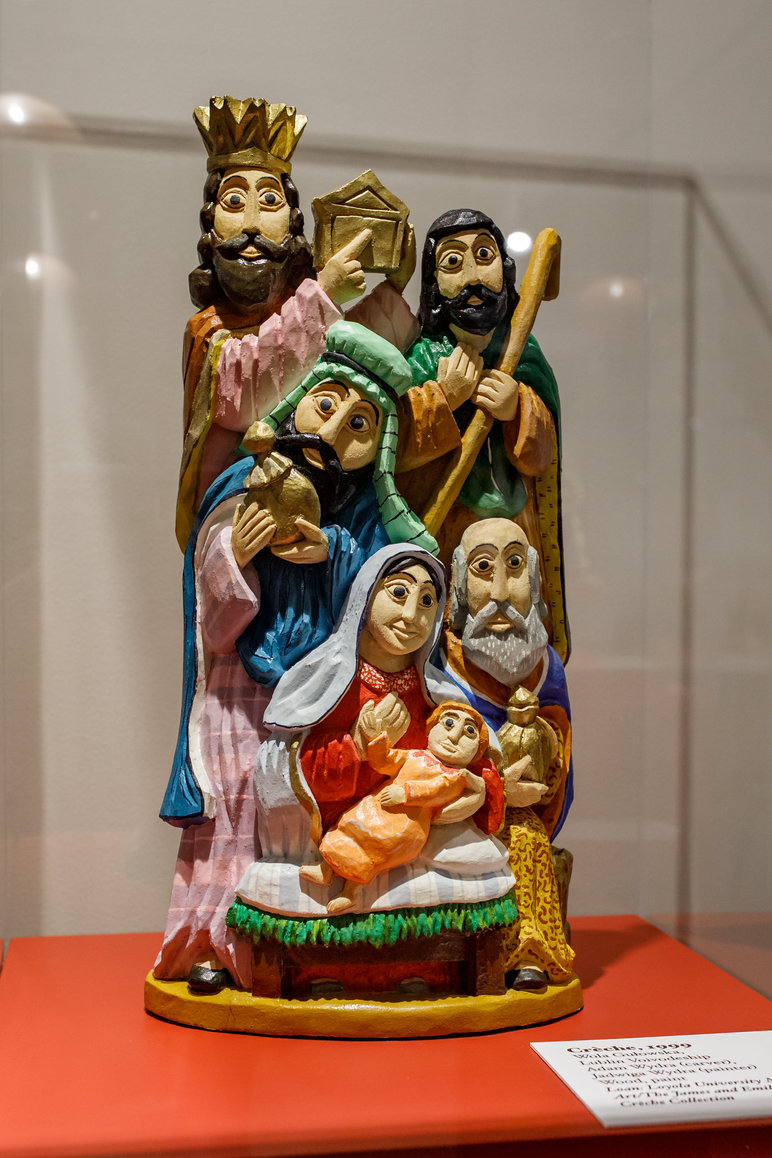
Some of the bas relief carvings capture the Flight Into Egypt in pieces nearly 20 inches tall. Another sculpted display pictures an older Child Jesus standing between Mary and Joseph, with God the Father and the Holy Spirit directly above him observing the scene from heaven.
Festive Feast
The show also features a one-room house, inviting visitors into the customary Polish dining room set for the traditional Christmas Eve dinner (called Wigilia) with distinctive foods for the occasion, including fish and pierogi.
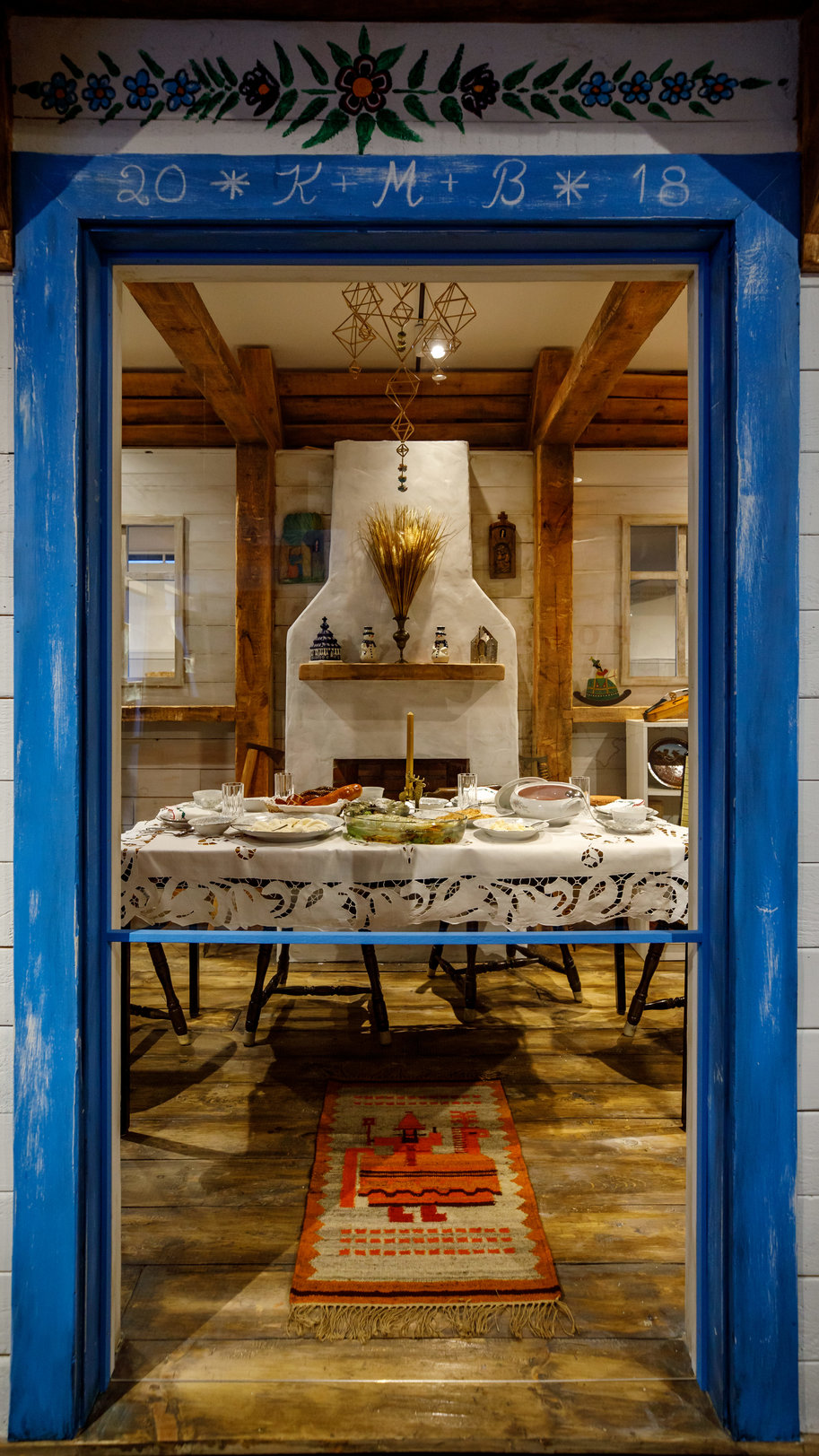
Every detail highlights traditions, from the foods that look fresh and immediately edible to the traditional straw peeking out from under the tablecloth, to the rich display of dishware, cobalt-trimmed glassware, musical instruments, knickknacks, Christmas tree with a small szopka under it and man and woman “dolls” in traditional Polish folk costume.
Sparkling Scenes
Meanwhile, the tinsel szopki gallery offers a colorful array that glitters and gleams. In these scenes, the manger is enshrined in an elaborate building modeled after existing castles and churches in Poland, with richly ornate steeples and domes, to portray such landmarks as Krakow’s St. Mary’s Basilica, Wawel Cathedral and the Royal Palace. The entire scene glitters like precious jewels due to the aluminum and metallic foils — predominantly in bright and sparkling golds, greens, silvers and reds.
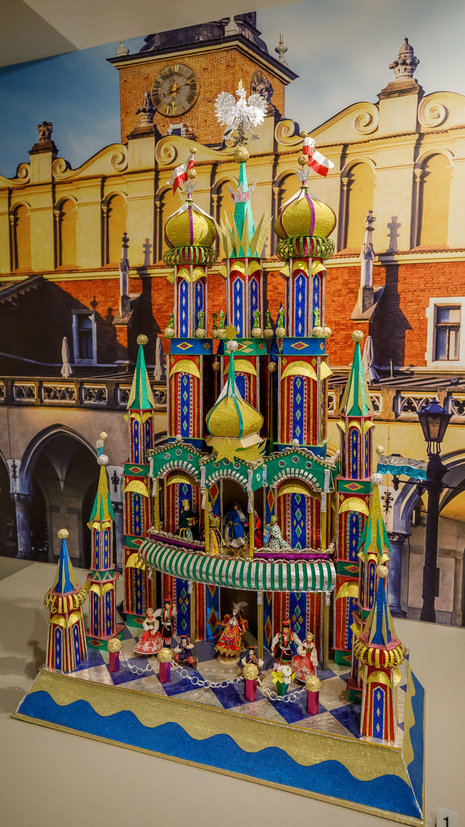
Underneath the foils and other bright materials, the structures are made of wood or cardboard. These Nativities are patterned after the szopka tradition dating back to the 18th and early 19th centuries in Krakow and Warsaw.
In this setting, the Nativity is normally found on the second level of the cathedral or building, open for all to see. The first or ground level normally features a scene from Polish life, lore or history.
One szopka differs in style because it appears primarily in blue, with glittery silver roofs topping the towers and turrets. It’s complete with the second-level Nativity, while on the ground level a Polish home’s dining room is set for Christmas Eve dinner; a Christmas tree brightens a corner of the room.
Another szopka, towering about four-and-a-half feet tall, displays Polish folk dancers arrayed in colorful traditional costumes performing for the Holy Family.
Other large szopki offer detailed symbols and architecture; their intense sparkle almost requires visitors to wear sunglasses for viewing. One after another, these divine dioramas are a seasonal sight to behold.
Szopki have such a pride of place in Polish culture that in 1937 in Krakow, a national szopka competition began, continuing today. This year’s Knights museum exhibit displayed a historic first — the “From Pittsburgh to Poland” szopka entered by David Motak in the Polish contest in 2010. It was the first szopka in the competition that came from outside of Poland. The stained-glass windows were modeled after those in St. Stanislaus Kostka Catholic Church in Pittsburgh.
Also eye-catching is a gleaming, all-silver szopka and an ornate szopka cathedral, the oldest in the show, which is more than four feet tall and richly detailed, with fanciful golden onion-domed towers. Made in Poland in either the 1930s or 1940s by a 13-year-old unnamed boy, it was eventually transported to the United States.
A beloved Polish saint also makes an appearance: A two-piece sculpture depicts Pope St. John Paul II kneeling in prayer before a szopka to contemplate the Holy Family and the birth of our Savior.
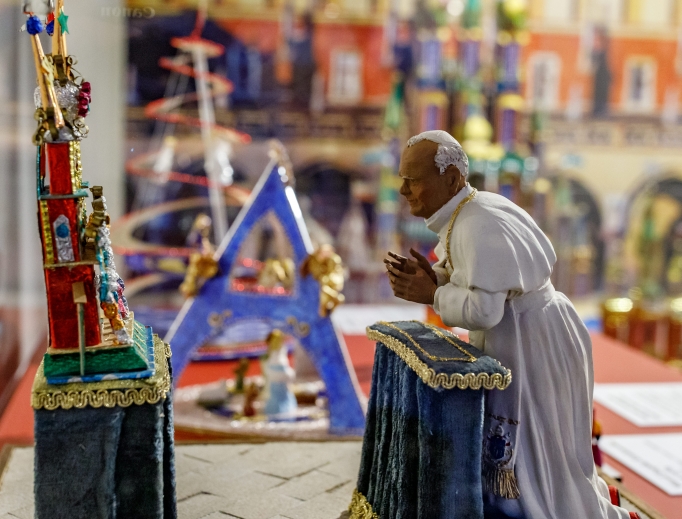
According to Father Tim Goldrick, pastor of St. Patrick Church in Falmouth, Massachusetts — an avid crèche collector who has loaned many crèches for the museum’s earlier shows — John Paul II was fond of crèches. And, when he was archbishop of Krakow, he would have judged the crèche competition.
This exhibit also offers “bonus” Nativity scenes from Italy and Mexico. In addition, the annual “Christmas Tree Festival” display sparkles with two dozen trees decorated by Connecticut elementary-school students.
All in all, “Christmas in Poland” offers beautiful crèches that highlight the reason for the season. Wesolych Swiat Bozego Narodzenia (Happy Holy Days of God's Birth)!
Joseph Pronechen is a
Register staff writer.
INFORMATION
“Christmas in Poland” runs through Feb. 3. Learn more at: KofCMuseum.org/en/explore/christmas-exhibit.html.







